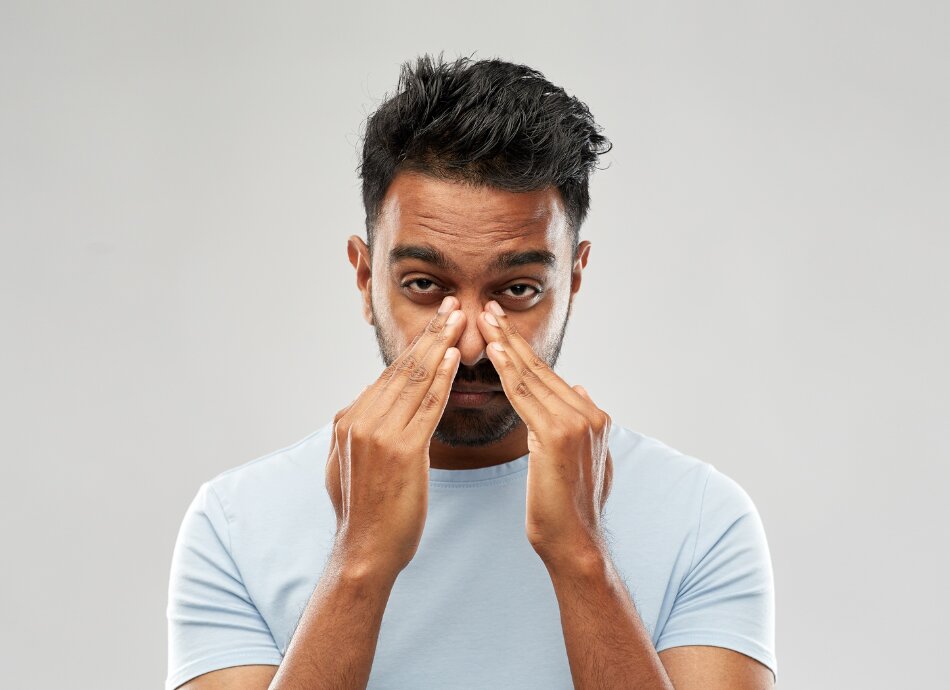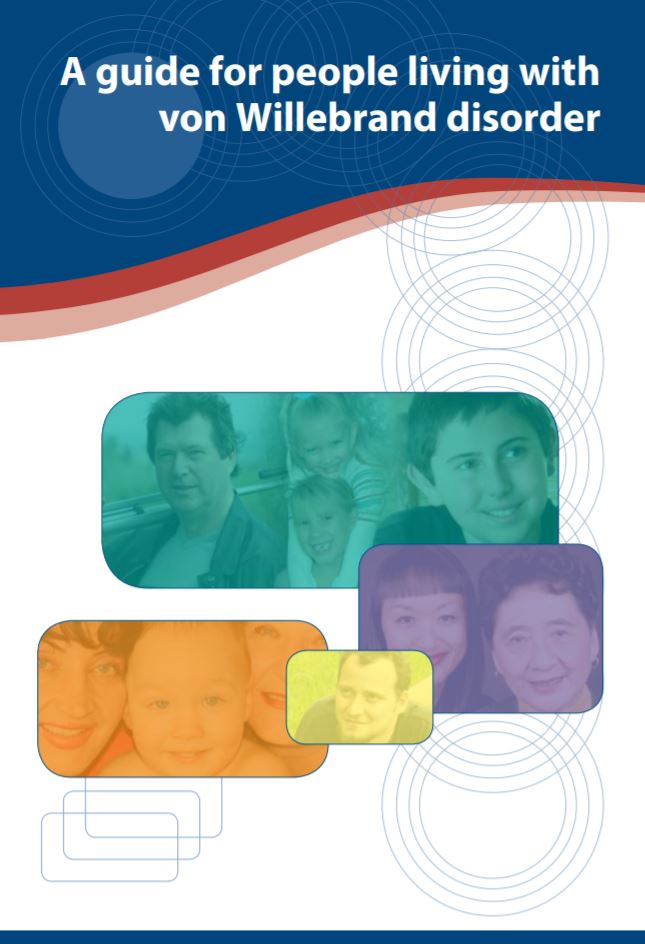Von Willebrand disease
Key points about von Willebrand disease
- Von Willebrand disease (vWD) is a bleeding disorder that causes a problem with blood clotting. It’s usually inherited from one or both of your parents.
- If you have vWD, it takes longer than normal for you to stop bleeding, eg, if you have a nosebleed or an injury or medical or dental procedure.
- vWD is often undiagnosed because many people have no, or only very mild symptoms. Women are more likely than men to notice symptoms of vWD because of heavy bleeding during their period or after childbirth.
- Treatment depends on the type of vWD you have and how severe your symptoms are. Most people have a mild type of vWD and can live normally.

Von Willebrand disease (vWD) is the most common bleeding disorder in the world. It causes problems with blood clotting – if you have vWD it generally takes longer than normal for you to stop bleeding, eg, if you have an injury or a medical or dental procedure.
About 1 in 100 people have vWD and it’s usually inherited from one or both of your parents. Some people have no, or very mild, symptoms and may not even realise they have vWD because they haven’t had a serious bleeding episode.
vWD is similar to haemophilia, but if you have vWD, you’re more likely to have more external bleeding, such as skin/tissue bleeding or bruising and/or nosebleeds. People with haemophilia can have these types of issues but can also tend to have internal bleeds, such as joint and muscle bleeds.
Unlike haemophilia, vWD affects males and females equally although women are more likely to notice symptoms because of heavy bleeding during their menstrual cycle (period) and after childbirth.
Treatment depends on how severe your vWD is. Most people with vWD have a mild form of the disease and live normal active lives.
Video: What is von Willebrand disease?
Note that the treatment DDAVP mentioned in the video is a US brand name for desmopressin as described in the treatment section below.
Von Willebrand disease is usually inherited, that is, one or both of your parents pass on the disease to you.
It can occur when there’s no family history of the disorder, but this is rare. This happens when there’s a spontaneous change in the von Willebrand gene before a baby is born.
Some people develop a form of vWD as a result of other medical conditions, such as heart problems or blood cancer. This is called acquired vWD.
Most of us have proteins in our blood that help blood cells stick together (clot) when we bleed. One of these proteins is called von Willebrand factor (vWF). It acts as a glue that sticks cells called platelets to the wall of a broken blood vessel to form a clot and stop bleeding.
If you have vWD you have low levels, or no vWF, in your blood or it doesn’t work properly. As a result, your blood doesn’t clot so well, and it takes longer for bleeding to stop.
vWF also carries another clotting factor, factor VIII (8), to the site of the injury, so when there are low levels of vWF there will also be low levels of factor VIII. Factor VIII is the clotting protein that’s inactive or missing in many people who have haemophilia.
There are 3 main types of von Willebrand disease (vWD).
You can develop type 1 or type 2 vWD when only one of your parents has the gene for it, but type 3 vWD usually only develops if both of your parents pass the gene on to you. The symptoms of vWD can vary a lot. Your symptoms, and their severity, may be different from what your parent(s) experience.
Type 1
This is the most common form of vWD. People with type 1 vWD have lower than normal levels of von Willebrand factor (vWF). Most lead normal lives and don’t need treatment. Symptoms are usually mild and can include regular nosebleeds, bruising and heavy periods. However, it’s possible for someone with type 1 vWD to have serious bleeding, especially after trauma or surgery.
Type 2
With type 2 vWD the vWF protein doesn’t work properly, causing lower than normal vWF activity. Symptoms are usually moderate and can include regular nosebleeds, bruising and heavy periods. Some rare sub-types are associated with more severe bleeding symptoms.
Type 3
This is the rarest but usually the most serious form of vWD. People with Type 3 vWD have very little or no vWF and low levels of clotting factor VIII. The symptoms are more severe and can include internal bleeding into muscles and joints, sometimes without an obvious injury.
The symptoms of vWD can range from very mild and barely noticeable to frequent and severe. Many people have very mild, or even no symptoms, and they may not even know they have vWD. Sometimes vWD isn’t diagnosed until after a minor surgical procedure (such as a tooth removal), or after an accident or childbirth, where heavy or long-lasting bleeding is seen.
Common symptoms of vWD are:
- frequent or hard-to-stop nosebleeds
- bruising easily or getting large bruises
- heavy or long-lasting bleeding from cuts or surgery
- prolonged bleeding from your gums after a dental procedure
- heavy periods for women.
You may have blood in your poo or pee from bleeding, eg, in your gut or bladder. Some people have painful bleeding into muscles and joints, sometimes without an obvious injury. This is known as internal bleeding and is more similar to haemophilia, but it's very rare.
Internal bleeding can be hard to recognise. Symptoms to watch out for include feeling pain, heat, tingling or bubbling sensations (eg, in a joint) together with swelling and stiffness.
For young children, watch for a joint that appears swollen or warmer than the other knee, elbow, ankle, shoulder etc, or difficulty using or straightening a joint. You may notice your child limping or avoiding putting their heel on the floor when they walk or stand.
Talk with your doctor or specialist nurse about how to recognise an internal bleed and what you need to do.
If your healthcare provider thinks you or your child might have a bleeding problem, they’ll refer you to a doctor who specialises in blood conditions (a haematologist). They can do tests for disorders like von Willebrand disease (vWD), such as checking how long you bleed before your blood clots and measuring levels of clotting factors in your blood.
Your healthcare provider will want to know about your symptoms and your personal and family medical history, especially if anyone else in your family has a bleeding disorder.
Because some people with vWD have near normal levels of clotting factors in their blood, it can sometimes take a while to get a diagnosis. Stress can also make diagnosis difficult, as it can temporarily increase levels of von Willebrand factor in your blood, giving a false result.
If you’re diagnosed with vWD, there’s a chance that people in your immediate family may also have it so they should be tested too.
Treatment depends on the type of von Willebrand disease (vWD) you have and how severe your symptoms are.
If you have a mild form of vWD you won’t generally need special medicines unless you’re going to have surgery or dental work, or you have an accident or injury. If you have a bleed, applying pressure to the wound (or pinching the soft part of your nose if you have a nosebleed) for a few minutes may be all you need to do.
You can usually use first aid to treat less serious bleeding yourself, such as cuts and grazes or nosebleeds.
Using PRICE to treat bleeds
You can use the PRICE approach to manage bruising or joint or muscle bleeds.

Image credit: Healthify He Puna Waiora
- Protection: Protect your joint by not putting weight on it for at least the first 48 hours and possibly longer if it’s a severe bleed. Use crutches or other supports.
- Rest: Completely rest the affected area to allow the swelling to ease and prevent further bleeding, but remember that too much rest can also be damaging, so start to move the joint gently within 1 to 2 days of treatment.
- Ice: Applying ice helps to reduce swelling, prevent further bleeding and ease pain. Don’t place ice directly on your skin as it can burn. Instead use a gel cold pack or make a cold pack from a bag of frozen peas or crushed ice wrapped in a cloth. Apply this to the affected area for around 10 to 15 minutes every 2 hours – don’t apply it for more than 20 minutes at a time.
- Compression: Apply pressure and a bandage to the affected area to reduce swelling and pain. Your physiotherapist can provide you with an elasticated bandage and will make sure it fits properly. A bandage that fits too tightly can cause more damage. Try not to allow wrinkles in the bandage and remove it at night.
- Elevation: Raise the injured area above the level of your heart. This increases blood flow away from the injured area and reduces swelling and pain. When you elevate your leg, remove your compression stocking to allow for normal blood circulation. Elevate the area for about 20 minutes at a time.
Using medicine to treat bleeds
Your healthcare provider may prescribe medicine to help stop bleeding when it happens. The 3 main treatments that can help stop bleeds are tranexamic acid, desmopressin and concentrated von Willebrand factor (vWF).
Tranexamic acid
- This can be used to stop bleeding in your mouth or for nosebleeds, gut bleeding, or bleeding after dental work, minor surgery or an injury.
- Tranexamic acid works by maintaining a clot (preventing a clot from dissolving once it has formed), it doesn't help form a clot.
- Tranexamic acid is often describes as 'holding the clot stringer for longer'.
- It's usually taken as tablets but may also be used as a mouthwash.
- Read more about tranexamic acid.
Desmopressin
- Desmopressin is usually used for more serious bleeds. It works by causing your body to release its stores of vWF from the lining of your blood vessels. This increases your levels of vWF and factor VIII to help your blood clot.
- Desmopressin isn't suitable for everyone – people react to desmopressin in different ways and your healthcare provider will need to test your response to desmopressin to check whether it will work for you.
- It can be given as a slow injection into a vein, but is more commonly given as an injection into the fatty tissue under your skin (subcutaneously).
- Since this releases the vWF stores in your blood vessels, you may need to wait for your body to make more (usually about 24 hours) before taking another dose.
- Desmopressin can also have mild side effects such as facial flushing, headache, nausea (feeling sick) and water retention.
Concentrated von Willebrand factor
- Another treatment for vWD is clotting factor replacement therapy using a concentrate made with vWF and factor VIII which replace the missing vWF and factor VIII in your blood.
- There are 2 types of VWF-containing concentrates but only 1 is available in Aotearoa New Zealand. It's made from human plasma (the pale yellow fluid part of your blood) from blood donors. These concentrates contain vWF and varying amounts of factor VIII. In Aotearoa New Zealand this is called Biostate and is made using Plasma from New Zealand donors, collected by the New Zealand Blood service (NZBS).
- Clotting factor concentrate is used when desmopressin isn’t suitable, or when it’s likely you’ll need treatment for more than 2 to 3 days, such as after major surgery.
- The treatment is infused (injected) into a vein in your arm.
Preventive treatment
If you have mild vWD, treatment such as tranexamic acid may also be given to help prevent or reduce bleeding, eg, before surgery or dental treatment.
If you have severe and frequent bleeds your healthcare provider may suggest long-term treatment (called prophylaxis) to help prevent bleeding. This involves regular vWF concentrate treatments with the aim of preventing life-threatening bleeding or recurrent joint bleeding. Fortunately very few people with vWD require this.
Treatments for heavy periods
If you have heavy periods as a result of vWD, speak to your healthcare provider or specialist about treatments to help control the bleeding.
As well as the medicines above, birth control pills (oral contraceptives) or other hormone treatment may be used. They help to increase vWF and factor VIII levels and control menstrual bleeding.
Heavy menstrual bleeding can cause iron deficiency which can lead to anaemia if it’s not treated. If your iron levels are low, you may need to take iron tablets.
Pregnancy and von Willebrand disease
You can get pregnant if you have vWD, vWF levels naturally rise in pregnancy so most women with mild vWD have very few problems. Although there’s a risk of:
- your child being born with vWD
- you having bleeding after labour or in the post partum phase as your vWF levels drop back to your normal non-pregnant levels
Woman with significantly lower vWF levels, and some of the Type 2 variants, can have more issues during and after pregnancy and should be under the care of a haemophilia centre as well as an obstetric team.
Speak to your specialist about your options if you're planning a pregnancy.
If you’re pregnant, you should discuss your birth plan with your bleeding disorders haematology team and your lead maternity carer (LMC) in plenty of time. This gives them time to plan for your delivery, including the use of an epidural. Planning ahead also allows time to discuss any need for treatment to prevent prolonged bleeding, for you and potentially for your baby, during or after the birth.
Menopause and von Willebrand disease
If you have von Willebrand disease and are going through menopause, you may have unpredictable and heavy bleeding even if you’ve previously had normal periods. See your healthcare provider or a bleeding disorder clinic if your bleeding gets worse during menopause. Hormonal treatment, iron tablets and tranexamic acid may help.
If you have von Willebrand disease (vWD), it's a good idea to:
- be registered with a bleeding disorders service (often called a haemophilia treatment centre (HTC)
- follow your treatment plan and go to all your follow-up medical appointments
- have a medical ID bracelet or other type of identification that shows you have vWD
- tell your healthcare provider, surgeon or dentist before you have a procedure or operation – you may need to take medicines to reduce the risk of bleeding before and afterwards
- tell your doctor or nurse before a vaccination – vWD shouldn’t stop you getting immunisations, it just needs to be considered to avoid unnecessary bruising
- avoid aspirin and anti-inflammatory drugs like ibuprofen unless your specialist advises you it's safe to use them, as these can make bleeding worse – use other medicines such as paracetamol instead
- ask your specialist if there are any activities you need to avoid – you should be able to take part in most sports and activities, but it's best to check first
- eat foods that have a lot of iron in them, such as dark green leafy vegetables, meat and pulses, to help prevent anaemia
- take good care of your teeth – brush at least twice a day and have regular check-ups – so that you don’t develop tooth decay that needs treatment
- have a first aid kit handy for treating minor injuries
- exercise regularly to keep your joints and muscles strong.
Apps reviewed by Healthify
You may find it useful to look at some long-term condition apps and self-management apps.
Most people with von Willebrand disease only have occasional and mild bleeding problems. vWD can’t be cured, but if you bleed often or have severe bleeding, there are treatments that can control or prevent these bleeding episodes.
With good management and planning, most people with vWD live active and independent lives. vWF levels tend to rise as we age, so it may be less problematic as you get older.
Haemophilia New Zealand(external link) supports and represents people with haemophilia and other related bleeding disorders, including von Willebrand disease, in Aotearoa New Zealand. They run a number of programmes and services for people with bleeding disorders and their families. They have outreach workers(external link) providing support in different regions of the country.
There are 6 haemophilia treatment centres in Aotearoa New Zealand (Auckland, Hamilton, Palmerston North, Wellington, Christchurch, Dunedin) that work regionally to provide a comprehensive service for people with haemophilia and related conditions, including von Willebrand disease, and their whānau. Services include annual clinic reviews, bleeding advice, treatment and genetic counselling.
Bleeding disorders(external link) National Heart, Lung and Blood Institute, US
Brochures
A guide for people living with von Willebrand disorder(external link) Haemophilia Foundation, Australia, 2010
What is von Willebrand disease?(external link) World Federation of Hemophilia, 2023
The facts on von Willebrand disease(external link) National Heart, Lung and Blood Institute, US, 2022
Apps
Long-term condition apps
Self-management apps
References
- von Willebrand disorder(external link) Haemophilia Foundation, NZ
- Von Willebrand disease(external link) NHS, UK, 2024
- The facts on von Willebrand disease(external link) National Heart, Lung and Blood Institute, US, 2022
- What is von Willebrand disease?(external link) World Federation of Hemophilia, 2023
VWD guidelines – diagnosis and management(external link) World Federation of Hemophilia
Brochures
Credits: Healthify editorial team. Healthify is brought to you by Health Navigator Charitable Trust.
Reviewed by: Brian Ramsay, Haemophilia Clinical Nurse Specialist, Wellington
Last reviewed:








